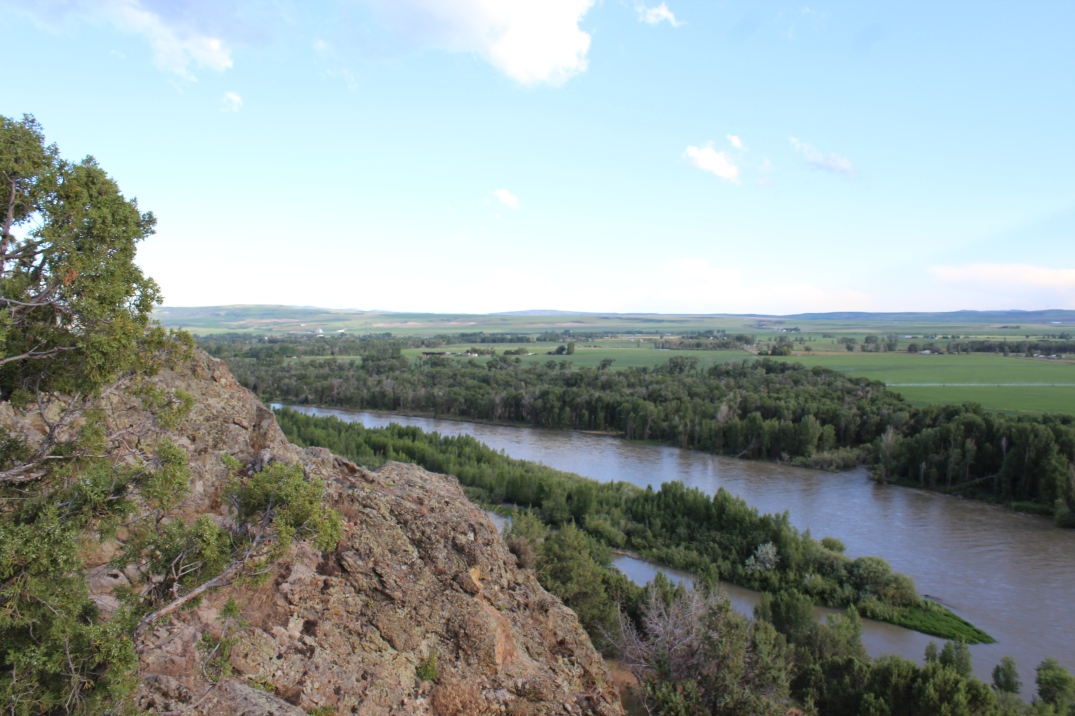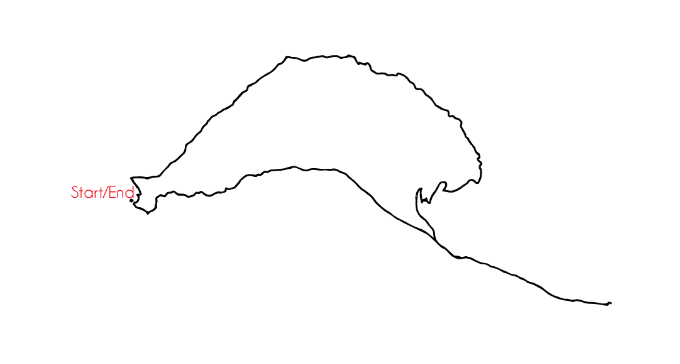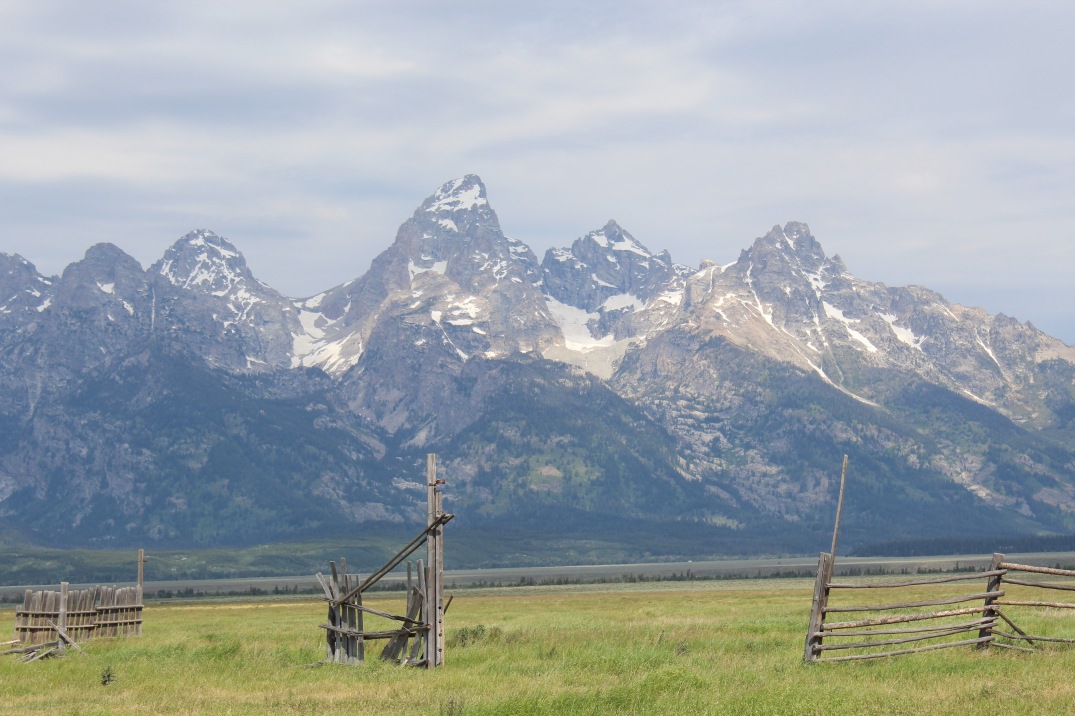Among the potato fields of southeastern Idaho, Brent Ashcraft had dreams for much bigger.
“I was always exercising and when scouts came we went on hikes and I loved that stuff, but then I got into school, went to college and got out of that, I got into the studying scene and lost touch with some of that,” Ashcraft said.
When Ashcraft turned 40 he decided to get back in touch with his love for the outdoors and took up climbing.
“We were driving from here [Rexburg] to Idaho falls one day and my coworker was saying, ‘You know I read this thing and I decided I wanted to climb something,’ and in the back of my mind I had always thought, ‘yeah, I want to climb, but I didn’t know that you could.’ I didn’t know how” Ashcraft said.
Ashcraft connected with other coworkers who were going to climb the Grand Teton and he took advantage of this opportunity.
Although, on Ashcraft’s first time up the Grand Teton his group didn’t even make it to the top.
Hiking the Grand Teton is a 14-mile round trip hike with the peak at an elevation of 13.776 ft. and an elevation gain of 7,000 ft. over the course of the hike, according to Jackson Hole Mountain Guides webpage.
“We got up to the meadows and he [the guide] says I’m sick and can’t go any further,” Ashcraft said. “We were really looking forward to this so he said that he could describe the way up, but he was only going to tell us as far as the upper saddle, he wasn’t going to tell you how to get to the top.”
Ashcraft and his hiking companion made it to the lower saddle. At this point, they saw some other guides and asked if they could get directions for the rest of the way.
“The guides told us that they couldn’t in good conscience tell us because it is so dangerous up there if you don’t know the way,” Ashcraft said.
Ashcraft’s first trip was later in the season. This required them to wait another year before attempting to climb again.
The following year Ashcraft met his goal and made it up the Grand Teton.
“Since then I have climbed it [Grand Teton] 17 times over the last 18 years,” Ashcraft said. “I love it.”
Ashcraft said that over the years he has learned that being prepared is the most important.
“I make sure there are at least three nice weather days in a row and I’ll just pick the middle one so that something doesn’t come surprisingly,” Ashcraft said.
Ashcraft makes note that not only is water, food and proper clothing important to have when you make any climb but knowing the way is vital.
Ashcraft doesn’t believe that he would’ve hiked the Grand Teton without someone showing him the way.
In 2014, it was reported that 2,658 search and rescue efforts were made. The exact number of lost hikers nationwide is unknown, according to the National Park Service.
“I’ve run into other people who have tried hiking for the first time without a guide and made it, but they end up in the middle of the night and they have lost their way and it ends up being kind of a miserable ending experience for them,” Ashcraft said.
Ashcraft explained that in the summer, thunderstorms can develop quickly and can be dangerous.
Ashcraft had one experience where he was taking a group of first timers up the Grand Teton and he noticed a storm developing in the distance.
“We got in between the lower saddle and the upper saddle and I could see the thunderstorm start to move in. I said, ‘we are turning around,’ and he didn’t want to, but his brother and sister convinced him, so we went back down,” Ashcraft said. “That was the day that lightning struck a group up there and killed one lady instantly and knocked a few others off, so they were just dangling from their ropes.”
Ashcraft said that by the time that happened they were back at the lower saddle and under shelter because they turned around.
“I don’t take those kinds of risks,” Ashcraft said.
Ashcraft explained that it isn’t just the spectacular views that keep him coming back to climb, but it is how he feels while he climbs.
Ashcraft linked his connection with climbing to the Old Testament.
In the Old Testament Moses goes to the mountaintop to speak with God. In the New Testament Christ went up into the mount and told his disciples to send the people away and he goes up into the mountain.
“To me, there is a connection in the same way. I actually love hiking by myself or in a group that’s not really chatty, because then you can absorb that and you can feel it and ponder about life,” Ashcraft said.
Whenever Ashcraft takes anyone up the Grand Teton he tries to bring this aspect of pondering life and following the spirit into each of his climbs.
“I will tell to listen to the spirit and that’s who you’re following, you’re not following me,” Ashcraft said. “I’m going to counsel you and I’m going to show you the way, but at any point that you have a feeling that you’re not supposed to go any further then that’s what you listen to.”
Ashcraft encourages everyone and anyone to set a goal to go on a hike. It doesn’t have to be a long or difficult hike. He said that it is ok if you start small, as long as you start.
“Just do it,” Ashcraft said. “It’s one of those things that you just need to try, well I didn’t do it until I was 40, and then I started thinking I just wasted a bunch of years.”
Since Ashcraft’s first climb he has climbed the Grand Teton 17 times, he has climbed Mount Borah and Diamond Peak multiple times, completed 11 races up Pikes Peak and participated in various Ragnar races.
“You just never know what you’ll love,” Ashcraft said. “It’s an effort and it’s time and it’s an adventure and it’s a challenge. You just got to try it the first time. Somebody needs to nudge you a little bit, like Jim [coworker] nudged me and now I just thank him every time I see him.”











